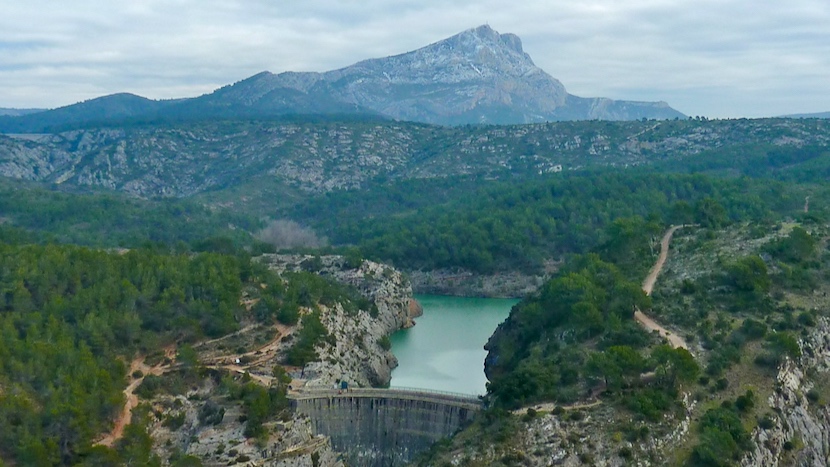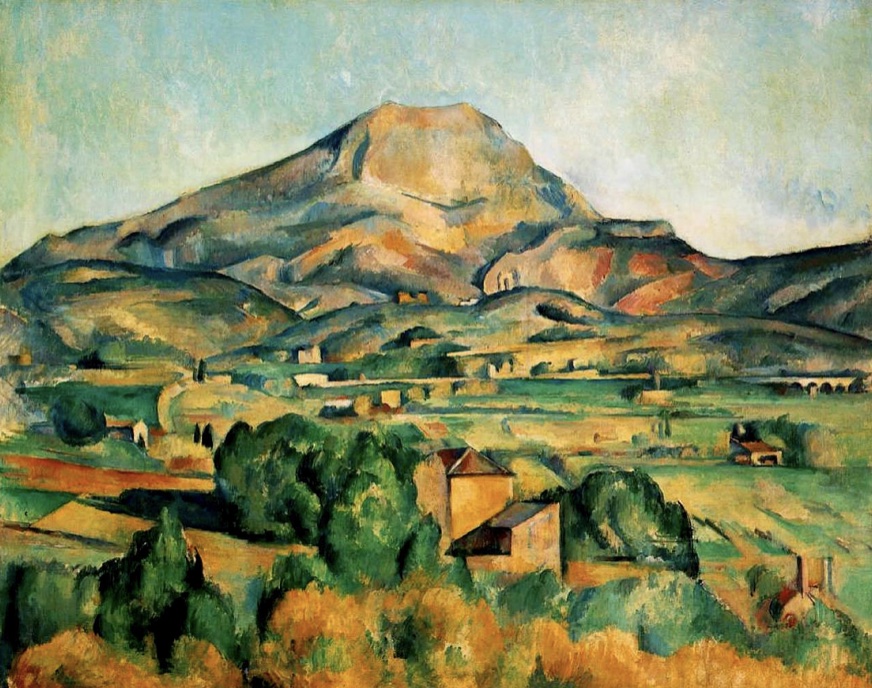
Montagne Sainte-Victoire
The Montagne Sainte-Victoire (Sainte-Victoire Mountain) is a limestone massif that extends more than 18 km between the departments of Bouches-du-Rhône and Var, and is an ever-present beacon in the stunning landscape surrounding Aix-en-Provence.
Rising to 1,011 meters (3,317 feet) at its highest point, the Montagne Sainte-Victoire has been an inspiration for many artists, most notably the post-impressionist painter and native Aixoise Paul Cézanne, who depicted it in 87 of his paintings. Another artist who was charmed by the beauty of the Sainte-Victoire was Pablo Picasso. So much so that he purchased the nearby Le Château de Vauvenargues, a 17th-century castle. He and his wife Jacqueline lived in the home from 1959 to 1961, and both are buried on the grounds.
Near the peak of the Montagne Sainte-Victoire stands the Croix de Provence, a 19-meter cross that can be reached by various trail routes. If you have the time and energy while you’re in Aix, I can highly recommend this experience. I’ve climbed it several times, and the views are absolutely spectacular all along the journey. Depending on which way you go, you’ll want to plan for 2-3 hours on the uphill and 4-5 hours for the roundtrip and be prepared with adequate water, food, and proper clothing for the season.
The expansive area of Bibémus is situated between the eastern edge of Aix and the western side of the mountain. Of particular note are the abandoned quarries (also made famous in paintings by Cézanne) which date back to Roman times and supplied the sandstone for construction in Aix during the 17th and 18th centuries.

Visitors can enjoy a range of outdoor activities including hiking and mountain biking along the elaborate trail system that has taken form over the years, or simply wander through the ruggedly lush terrain to admire the panoramic views. You’ll also find two dramatic river dams here, a smaller one called Barrage Zola which was completed in 1851 and is named for its architect François Zola — father to the celebrated author Émile Zola — and the larger Barrage de Bimont, an arched dam commissioned in 1952.
